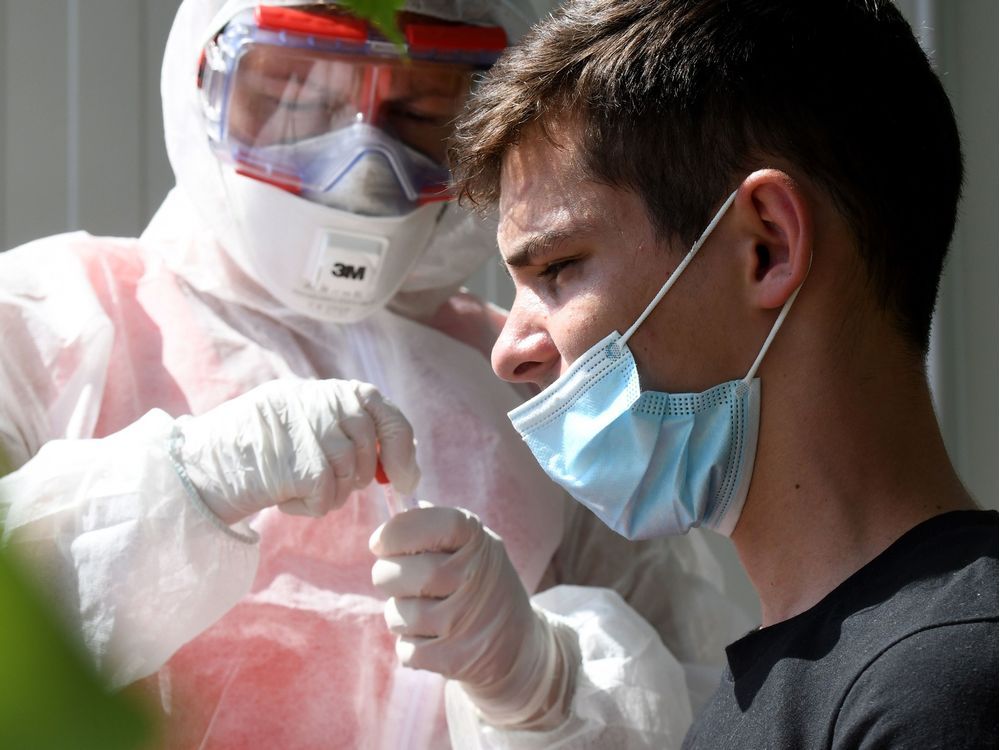young people are now the leaders of a devastating surge in covid-19 cases in most parts of the world.we’ve seen it in the u.k., philippines, japan, south korea, spain, france, and here in canada.the numbers of people in their 20s and 30s diagnosed with covid-19 far surpasses other segments of the population — in many countries, the virus surge has been driven almost entirely by young people.south korea, which emerged early as a successful model for testing and contact tracing, was the first country to officially
announce a second wave this summer, after a series of outbreaks at nightclubs. in many parts of europe, mainly
spain and france, large waves of cases have been driven by gen z and millennials, while p
eople under 40 account for more than half of confirmed infections in australia and the philippines, reports the washington post. in japan, they account for a shocking sixty-five
per cent of recent infections.“people in their 20s, 30s and 40s are increasingly driving the spread,” said takeshi kasai, the who’s western pacific regional director, at a
news briefing last month. “many are unaware they’re infected — with very mild symptoms or none at all. this can result in them unknowingly passing on the virus to others. this increases the risk of spillovers to the most vulnerable: the elderly, the sick, people in long-term care, people who live in densely-populated urban areas and under-served rural areas.”
young people aren’t only partying, some don’t have another option
while young people are more prone to taking risks than the elderly, there are also structural factors that make younger people more likely to congregate, says
dr. andrew morris, a professor at the faculty of medicine at the university of toronto.younger people live and work in situations that put them at higher risk, whether it’s seasonal jobs, needing to rely on public transit, schooling, housing or social situations. they also tend to have bigger social circles, while still being attached to their families.“you end up having different social networks,” says morris. “compared to a 10-year-old whose main network is their household, plus or minus a few friends, a young adult may not live with their parents anymore, so they may have roommates. then they’re suddenly part of a much larger bubble.”
different needs
toronto-based neuroscientist and science communicator
samantha yammine says it’s important to remember there is a spectrum of young people, all with different challenges.“young people are also young black people and young indigenous people are struggling a ton because they’re having intersecting challenges,” she says. “for young people with low income, people with disabilities or who are immunocompromised, [covid-19] becomes just harder and harder. age is really just one player.”yammine recently hosted an instagram poll asking people in their 20s about their challenges with covid-19.
hundreds of people responded, discussing challenges ranging from living in a house with multiple roommates and losing control over their bubble, to being unable to physical distance in their workplaces.“most of us would agree we were not the same person when we were 28 or 21,” she says. “i think we forget that people in their 20s are icu nurses and doctors, and parents and teachers, as well as students. the twenties is a very mixed year, i think we’re forgetting all of the different challenges.”
is it a generational thing, or a problem with our system?
instead of focusing on what young adults should be doing, we need to think about how to make systems easier for them to live within, says morris.“[the pandemic] is a substantial challenge for [young people] in terms of being able to engage in activities, and we don’t have systems in place to tell them when the risk is lower or higher,” he says, recommending that we follow a more structured way of guiding young people, similar to what has been done in other areas. for example, when canada faced an outbreak in long-term care facilities early in the pandemic, the problems of exposure and spread were identified and policies were put in place to protect residents and stifle further infection.“we need that same kind of attention focused on young adults, and have them as part of the solution,” says morris. “there’s nowhere in the world that’s figured out how to overcome the challenge of young adults being infected. so how do we learn from where others have failed?”
it’s not about shame
yammine
has an idea of how and what should be done, and where we can start.
“in terms of how to do it, it’s not using shame, but instead, using accountability,” she says. “we need to lead the conversation with empathy to incite a behavioural change. we know empathy is key if you’re really trying to engage and compel people.”in terms of the what, yammine says giving harm reduction tips instead of simply pointing to accidents would help. “instead of saying, ‘don’t do this, don’t go to parties, don’t do that,’ what can we do? what are the things we can do to minimize risk, knowing that we’ll never have zero risk, because it’s just impossible,” she says.lastly, yammine says where these messages are communicated is important. “we need to be where young people are,” she says. young adults aren’t watching cable news, the premier’s live press conferences, or following doctors on twitter, where a lot of crucial information is being shared. sharing information on social media platforms where young people are active, such as instagram and tiktok, would have better reach for important public health messaging. in fact, a recent study published in the international journal of adolescent medicine and health, researchers found tiktok was an untapped potential for conveying vital and educational covid-19 information.looking at the #coronavirus hashtag, researchers found most videos touched on anxiety and quarantine, but there was little information on transmission and preventing infection. less
than 10 per cent of the videos mentioned how the virus is transmitted, symptoms of covid-19 and prevention of viral spread. none talked about death and death rates, viral incubation time, wearing a face mask or travel restrictions. the researchers say this platform is a missed opportunity for impressing important information on how to control covid-19 spread.“people have more trust when it’s something coming from their in-group,” says yammine. “if we can have people in our demographic, sharing this information and collaborating with officials, that would make prevention strategies a lot more compelling. young people already know how to reach their peers, so that to me, is the approach.”
dduong@postmedia.com |
@dianaduodon’t miss the latest on covid-19, reopening and life. subscribe to healthing’s daily newsletter coming out of covid.
 5 minute read
5 minute read








